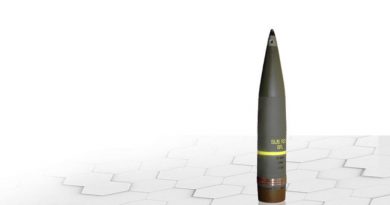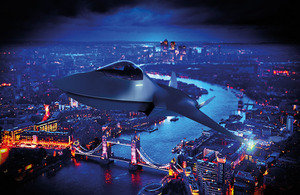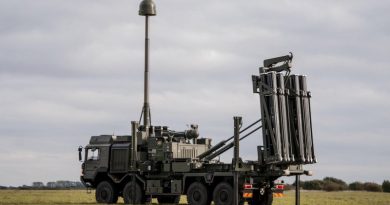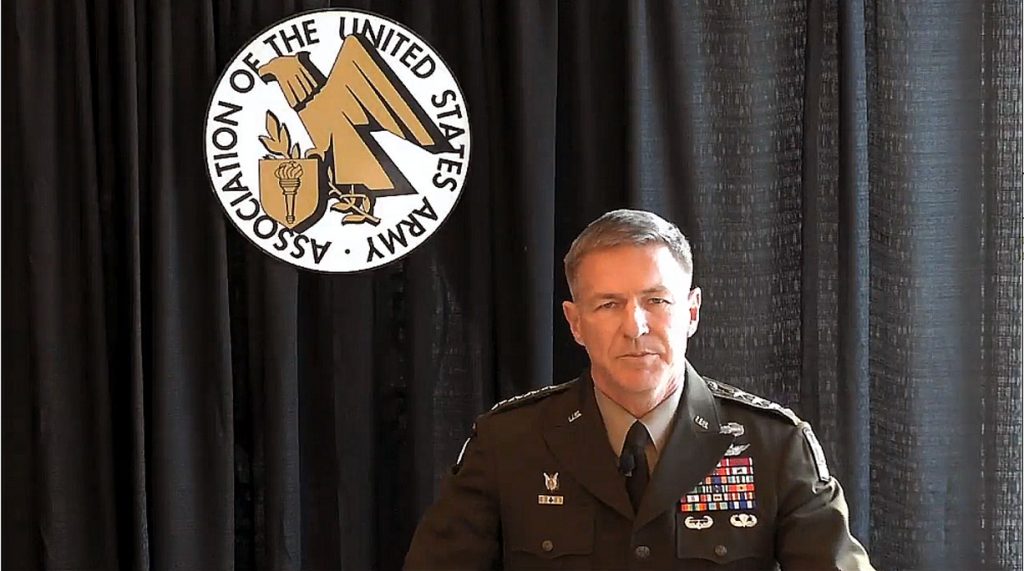
AUSA Noon Report: the word to the US Army Chief of Staff
By Paolo Valpolini
19 January 2021 – Talking on the eve of the Inauguration Ceremony of the 46th President of the USA at the AUSA Noon Report, Gen. James C. McConville, the 40th US Army Chief of Staff made it clear that in an s era of great powers competition the US Army must always be ready to compete aggressively to protect US national interests. To do so transformation is a must, looking at potential peer adversaries that are developing their forces exploiting technological advances. “We must continue to transform our doctrine, build new organisations, change how we train, develop and field new weapon systems, and implement a 21st century talent management system so the Army has the right people, in the right jobs at the right time,” Gen. McConville said. Manpower is priority one; “If we send the US Army somewhere we don’t go to participate, we don’t go to try hard, we are going to win. There is no second place or honour mention in combat, and we will win by developing cohesive teams that are highly trained, disciplined, and fit. We win by doing the right things, the right way, and we win through our people. That’s why we put people first, and that’s why people are our number one priority.”
Deterrence was one of the points most stressed by the US Army Chief; “Our nation’s goal remains winning without fighting, leveraging all elements of national power. Deterrence is one critical part of competing successfully; to deter aggression the Joint Force must have an irrefutable demonstrated ability to fight and win.”
Transformation is key to maintain that capability, as adversaries are closing the gap, according to McConville. “I have set an Army aimpoint for 2035 as the date at which the Army will be modernised and prepared to dominate our adversaries and to sustain multi-domain operations; 2028 is our waypoint, a point at which we will comprehensively reassess our assumptions about the future and adjust our investments accordingly.”
In this the recently created Army Futures Command is the key element, as it continues to evolve modernisation priorities and develop programmes required to support multi-domain operations. Among organisational changing, the creation of Multi-Domain Task Forces was one of those carried out to respond to new scenarios. Speaking of those new formations the US Army Chief explained that “they provide long range precision effects, so they can do information operations, cyber, electronic warfare, space, below the level o conflict, but also they can provide Long Range Precision Fires which, if required, could penetrate anti-access area denial capabilities. This is what we are bringing to bear and we think it is very important for deterrence.”

To do so the development of new weapon systems is of paramount importance, and Gen. McConville stated that he is “amazed on how Futures Command, with Industry, is developing the programmes through the Cross Functional Teams. However the key issue, according to the US Army Chief, “is what we call convergence, is how we bring these systems together, so we talk about the network, about integrating air and missile defence, we are going to bring those systems together with our joint partners under what we call C-JADC2, the Combined Joint All-Domain Command and Control, to which we added a “C” because we thought it was so important that our allies and partners are part of this team.” He mentioned a test carried out at Yuma Proving Ground in September 2020, when the flow of data went from the sensor to the shooter in a matter of seconds rather than minutes.
Mentioning allies and friendly countries, Gen. McConville stressed the importance of Security Force Assistance Brigades, another result of the continuous reorganisation, which ensure assistance and training to friendly armies throughout the world, although clearly hinted the top priority acquired by the Indo-Pacific region, considering the increasing development of the Chinese expansion policy. In that area “we see the Army playing a key role in working with our Allies and partners in fostering critical capabilities. We are focused on maintaining and enhancing those relationships. For example we are executing “Defender Pacific 21” to focus on the southwest Pacific, where we deploy a Multi-Domain Task Force. The increasing importance of the Indo-Pacific is also shown by the fact that the US Army Chief flew three times in the region in the past 18 months and is planning two further trips in the near future.
That said the Army is not forgetting other key areas around the world: “We continue to adjust our forces in Europe and in the Middle East to be sure we have the right global calibrated force posture,” he added. When the new Administration will set the pace, “We will follow the Administration’s lead,” he said, underlining that the Army maintains a four-star command, US Army Europe and Africa, which is extremely important as it gives the opportunity to work closely with NATO allies and partners in the region. “We also stood up the V Corps, which is focused on Europe, so we have an operational command and control HQ, and we have other options that we can work our way through, and that we will align with the strategy that the Administration will put out.”
However another potential front is located in the far north, the Arctic. “We recently completed the Army’s Arctic Strategy, providing the nation with capabilities to compete and deter conflict in this region. We are looking at transforming a two-star headquarters into an operational headquarters. We are looking at establishing a Multi-Domain Task Force in the region, and we are looking to establishing an arctic-capable brigade,” Gen. McConville explained.
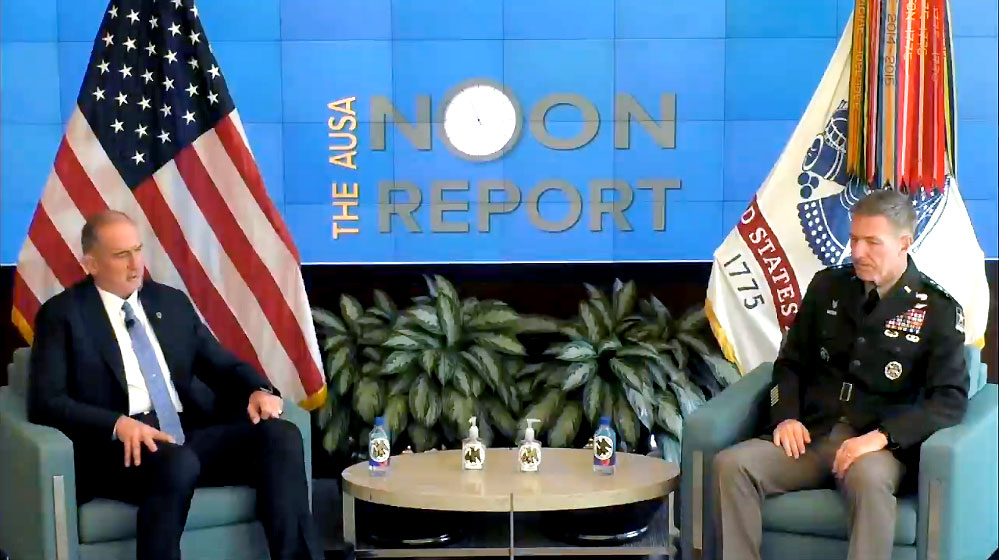
Back to manpower, in 2028 the US Army should be formed by about one million servicemen and women, half of the part of the Regular Army, the remaining half being part of the National Guard or the Army Reserve, a necessary trade-off to allow modernisation. That said the Chief was clear in explaining the modernisation strategy within the various categories of units: “Historically people have looked at systems first filling the 31 Regular Army brigades, then going to National Guard and Reserve units. That’s not how I see the future. When we will get our Future Vertical Lift, if we for example would form four battalions, we might have one Guard and one Reserve,” the Chief said, underlining the increasing importance of these components.
Another key initiative is the adoption of the Regionally Aligned Readiness and Modernization Model; “This is our new framework for integrating and synchronise requirements that are balanced to provide predictability for training and modernisation efforts. This is our method to maintain focus on current and future readiness while reducing the OPTEMPO challenges that strain our organisations and people. This framework will transform the Army into a multi-domain capable force, ready for competition, crisis, and when necessary conflict.”

